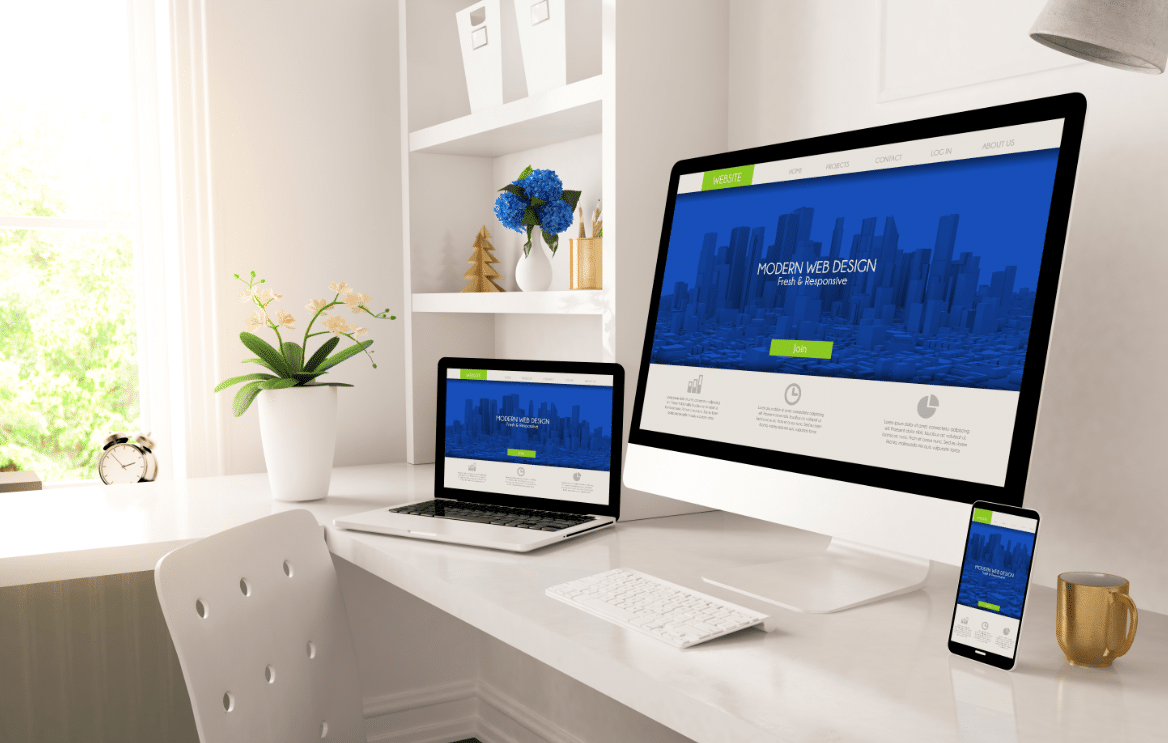Even the best product in the world can be overlooked online if the webpage you sell it on isn’t designed in a coherent and pleasing manner. Website design plays an important role in all e-commerce transactions, as the design and aesthetics of the page go a long way in influencing consumer purchase decisions.
The goal for every e-commerce website is to sell more of what they have on offer. Adding enhanced design elements to your webpage can help you increase your revenue and sales figures. A great web design shouldn’t just catch consumer attention, but should also encourage and motivate them into taking action. The action is what drives sales to generate revenue for you.
But, how exactly do you create the perfect e-commerce website design? How do you design an e-commerce website where products fly off your virtual shelves without any delay?
In this article we look at some of the most actionable design tips e-commerce websites can follow to sell more. Our design tips are based on prior case studies and help you inspire your creativity for the overall benefit of your website.
1. Tell a Story
Great products come with great stories and these stories should properly be placed on your webpage. Almost anyone can slap together an e-commerce website today and sell what they have to, but consumers are more attracted to brands and online stores with a story behind them. In fact, your story is what sets and defines the brand image for your product or online store.
So, put your creative hat on and write down a compelling story about how your brand came into being and what makes you the perfect choice for consumers. The story you write and the words you use eventually end up developing the strong brand image you prefer.
Storytelling doesn’t just distinguish your brand, but it also helps you foster loyalty and form a connection with customers. Customers tend to remember brands they form a connection with.
The best way to write your own personal story is by including the following points:
• What made you come up with this store or this product?
• How did the creation of this store or the idea behind this product influence your life?
• How do you envision the future?
• Who is your target audience?
Answer these questions and make consumers feel like they are a part of something truly special. When you’re done jotting your story, it is also necessary that you highlight it appropriately. Capture parts of the story and even add them to your home page.
2. KISS – Keep it Simple, Silly!!
Keeping your website design simple is one of the most important rules to follow while designing your own e-commerce platform. Simple is always better when it comes to an online selling platform. The more elements you add to the page, the harder it will be for consumers to navigate through the mess.
From extra colors to extra branding, pop-ups, content, and categories, everything extra can spoil the visual appeal of your website. There is nothing sloppier than an obnoxious navigating experience where consumers are confused for direction. Don’t test your consumer’s patience, because people today happen to have shorter attention spans. Create a complex e-commerce website and consumers will run away faster than they come in.
Make it easy for consumers to find specific products and items they are looking for. Also make it easy for them to purchase the item, without constantly cross clicking pop-ups and ignoring ads.
3. Colors Inspire Emotions; Use Them Properly
Colors are as important to an e-commerce website as the branding itself. Colors are known to have a psychological impact on your customers. Such is the psychological impact of colors that they now play an integral role in the digital revolution.
Understanding the different kinds of impact colors have can help you design your e-commerce website using the right color tones. Match the certain vibes and feelings of your target audience through your color schemes.
The emotions commonly associated with different mainstream colors are:
Red:
• Intense
• Strength
• Energetic
• Danger
• Associated with edibles
Orange:
• Hot
• Success
• Aggressive
• Associated with items consumed by younger generations
• Spicy food
Yellow:
• Cheerful vibes
• Optimistic
• Energetic
• Also supposedly associated with food
Green:
• Associated with wealth
• Associated with mother nature itself, through the color of nature
• Freshness
• Relatively easier for eyes to process. New products can benefit
Blue:
• Security
• Trust
• Peaceful
• Corporate
• Faith
• Wisdom
Purple:
• Luxury
• Royalty
• Mysterious
• Calming Impact
Black:
• Formal
• Sophisticated
• Powerful
White:
• Positive
• Generally associated with medical professions
• Clean
You can incorporate color in your e-commerce website based on the emotions of your target audience. For instance, an environmentally friendly brand can use green as a way to complement its enhanced sense of nature.
Recent research has identified that consumers take less than 90 seconds to form their opinion of a product and a website. And, since this opinion is formed so early in the interaction, colors are exclusively responsible for 70 percent of it.
4. Delve Into Consistency
Consistency really does matter when it comes to your e-commerce website. A consistent online website with the perfect use of colors and a similar overall brand image is easier to remember for consumers.
Users remember web pages not because of catchy names or sparkling designs, but because of the consistency of their overall brand image. The more consistent you are in your approach, the better it is for you. Consistency in this regard is achieved through how you structure your pages and how you follow similar standards across the board.
Are you using the same colors and fonts across all your product pages? Do you use a strong typographic pattern to instill a distinct memory in the minds of your consumers? Do you select colors for product pages based on the emotions associated with them? If yes, then your webpage sure will be easy to remember for customers.
Even if your e-commerce platform has a lot of different products and categories, try to keep a consistent approach towards your formatting, content type, and typography. Consistency really is the ticket to boosting sales as it sets a positive impression and can settle in with the subconscious mind of consumers.
5. Work with Urgency
The concept of urgency has long been a ploy for all kinds of global retailers to play with. Think of Black Friday sales. Why do these one-day sales generate a massive response? Is it because of the discounts? Nah, research shows that discounts similar to what is offered on Black Friday can be enjoyed during the rest of the year as well.
So, what is it? Urgency! More than the benefit of the discounts you get on Black Friday or Boxing Day, it is the limited nature of these discounts that gets consumers to act. In other words; urgency is an important selling strategy! Retailers create urgency by announcing discounts for a 24 hour window, forcing customers into action. Consumers usually jump into action, knowing that the discount probably won’t be available after the 24 hour window, regardless of how good or exciting it is.
Similarly, if you want your e-commerce website to be a hit, it is necessary that you include some form of urgency in it. Most online stores offer exclusive deals on the upper part of their home page. Consumers are lured in through the irresistibility of these deals and through the urgency of the clock ticking on these deals.
However, other than playing with price, you can experiment with urgency with other aspects as well. Give free shipping on all products for one day. See how many people will jump in to avoid the one unnecessary expense of online shopping.
6. Use Clear and High Quality Images
There is plenty of data and previous research to suggest that high quality, visually appealing images can improve the conversion rates on your website. We aren’t just talking about your product images. But we are also focusing on the overall design and photos used on your e-commerce platform.
A great photo helps instill emotions while creating a sense of identity in consumers. The average consumer can remember over 2,000 images they see during a week with almost perfect accuracy.
Products do not sell until you have plenty of excellent product photos to back up the design you have created through aesthetic and high quality images. Grab consumer attention by capturing the true essence of your product through high quality images. You don’t need a giant photo rig or expensive cameras to get this job done. Thanks to plenty of how-to guides and tutorials online, you can take amazing product pictures through your smartphone camera.
7. Think Like a Website Visitor
If you want your e-commerce design to succeed, it is necessary that you start thinking like your audience. It is only when you put yourself into your customer’s shoes that will you be able to identify some of the things that they like different.
Ultimately, all potential customers want the same things in the perfect e-commerce experience – a site that is easy to navigate through makes shopping easier, is well designed, has a straightforward mechanism, and creates no new hassle. If you seriously want your e-commerce platform to succeed, it is necessary that you give your consumers all these things.
8. Use Social Proof
There is no better way to bring in new customers than through social proof. Reviews and testimonials from other customers will help build trust with new customers.
Incorporate reviews and testimonials within the website design so that they don’t cramp up important spaces and are also easily visible to new clients. All your perfect 5 star reviews need to be in your customer’s line of view.
9. Make Checkout Easier
Nothing kills a sale more than a clunky checkout, cramped with unnecessary options. And boy, a customer lost at checkout hits where it hurts. If your checkout process is a pain in the you-know-what, you will definitely lose customers.
To make sure that people buy from you and come back for repeat purchases, you need to make the buying process as pain-free and simple as possible. The checkout page should be easy to navigate and shouldn’t have any additional pop-ups or any unnecessary details.
Additionally, also try to make all information available on one page. The last thing a customer wants after filling in one page for check out details is another page requiring even more details. Make it easy and simple for all consumers by eradicating extra pages.
10. Use A/B Testing Regularly
A/B testing is a common form of website analysis used by e-commerce retailers. Online retailers use two different website layouts, titled A and B, simultaneously. Different website layouts have different design and content features. 50 percent of the consumers see website design A and the other 50 percent see website design B.
After keeping these two different websites in place for some time, you should compare the metrics for both websites. This will help you identify which website design has more conversions, more traffic, and more sales. Go for the one that proves to be more beneficial for you.
Designing a website that converts like crazy can be tricky and complicated. However, once you master the ever-changing landscape of design, you can explicate patterns and user behaviors to offer the latest trends for higher sales.
Our design tips are a result of extensive research and are targeted for any e-commerce site looking to improve user experience and increase sales.
Interested in learning more about how JJ Social Light can help boost your e-commerce business? Schedule a call HERE








0 Comments